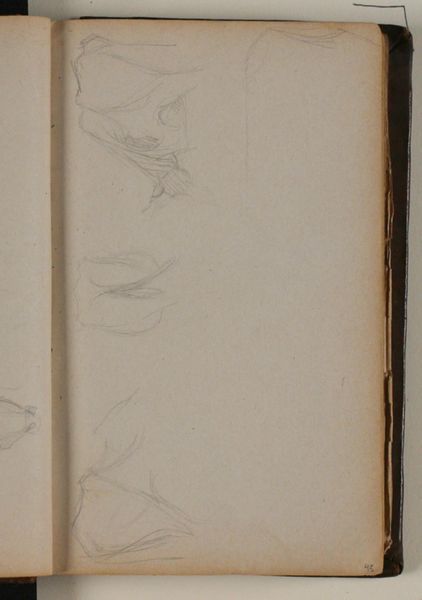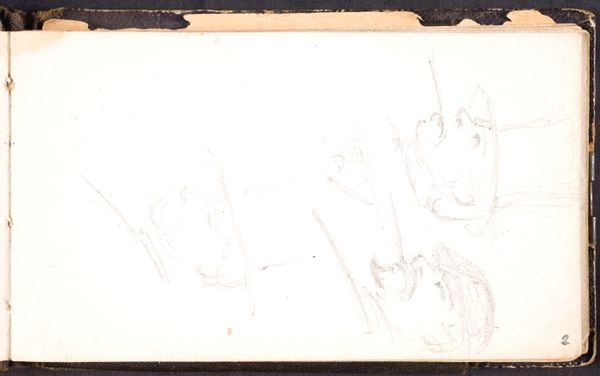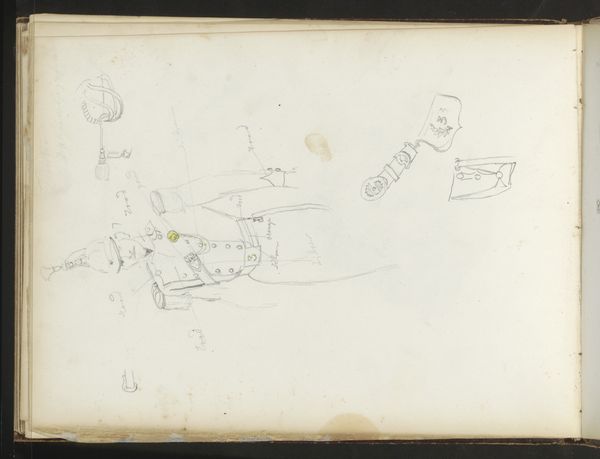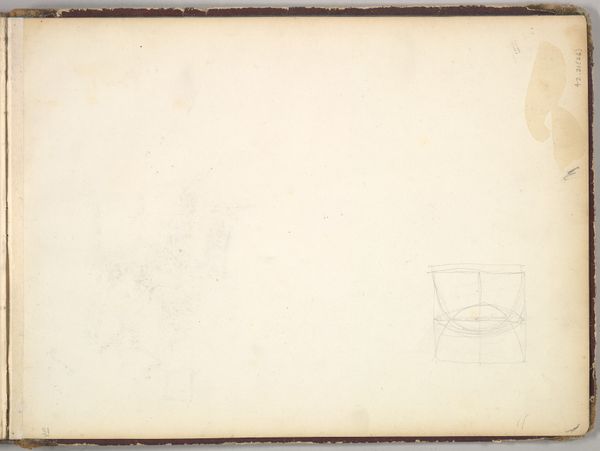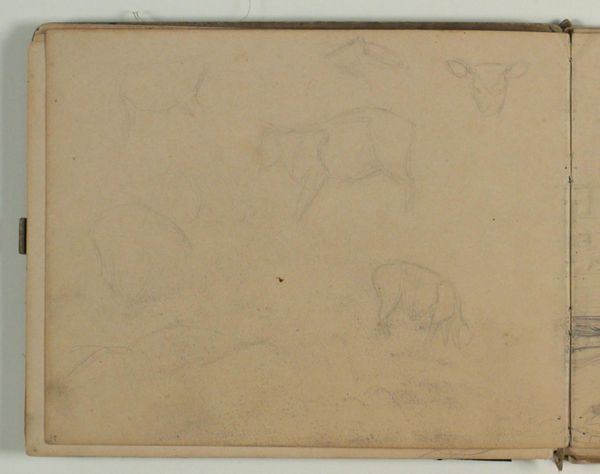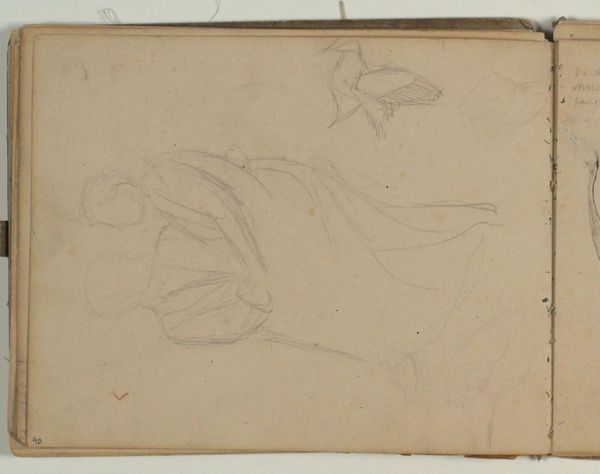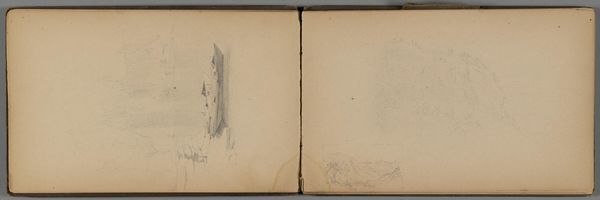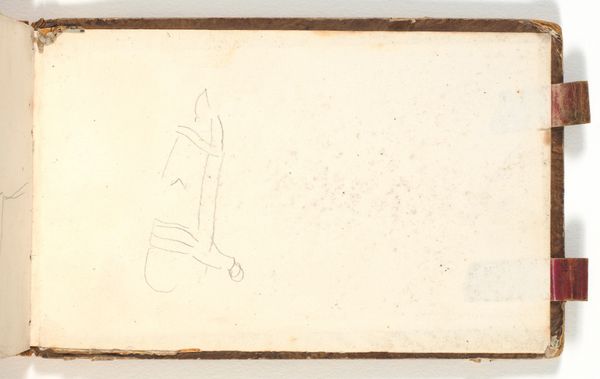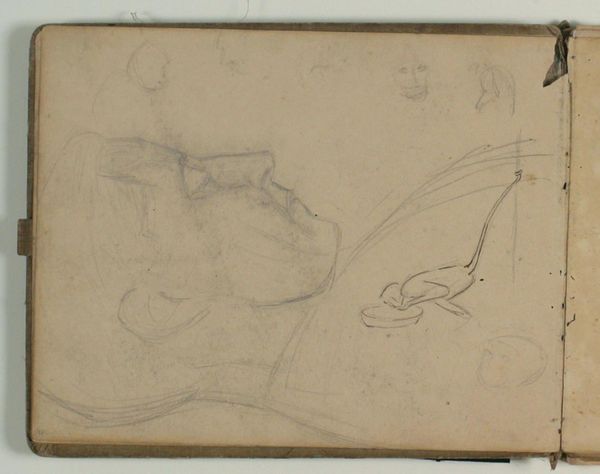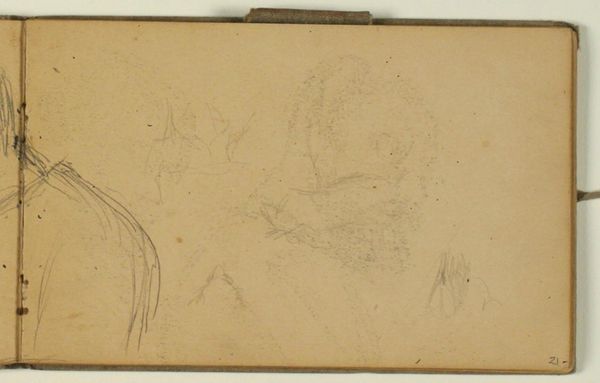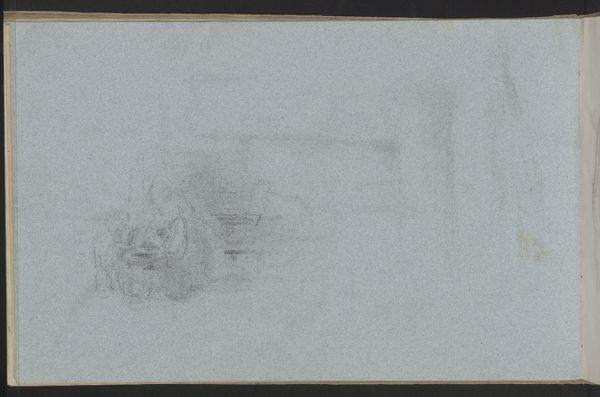
drawing, paper, pencil
#
drawing
#
water colours
#
landscape
#
paper
#
coloured pencil
#
pencil
Dimensions: 204 mm (height) x 260 mm (width) x 13 mm (depth) (monteringsmaal), 204 mm (height) x 260 mm (width) (billedmaal)
Curator: Niels Larsen Stevns' "Skitser af hare," created between 1900 and 1905, is a beguiling study. Executed with pencil, colored pencil, and watercolor on paper, it invites us into the artist's private observations. Editor: It's intriguing, this snapshot of a hare... almost secretive in its presentation. The subdued palette lends an intimate feel; it's as though we're peering over Stevns' shoulder as he captures fleeting impressions. Curator: The choice of medium reinforces this sense of immediacy. The spontaneity of the pencil and watercolor suggests Stevns sought to record the hare's essence rather than produce a highly finished piece. What symbols do you see here, or is the focus on simply capturing the creature's form? Editor: For me, the hare itself has long carried complex associations across cultures - fertility, timidity, but also cleverness. Placed in a landscape sketch it suggests our fraught relationship with nature, where beauty and vulnerability coexist. This unpretentious sketch also evokes a feeling of stillness and the close observation of nature, an aesthetic stance common at the turn of the century. Curator: That’s insightful. It reminds me how the hare motif evolved throughout art history – from ancient allegories to more contemporary representations of naturalism. Stevns' interpretation appears to lean towards this understated appreciation of wildlife. The sketch resides within a larger cultural narrative that continues to influence how we perceive these creatures today. Editor: Absolutely, and placing these sketches within the context of turn-of-the-century Danish art highlights a burgeoning interest in regional landscapes and local fauna, shifting from more grandiose historical subjects towards a more focused, intimate sphere. The materiality also is important here: inexpensive paper and graphite suggest these observations were accessible, both in their creation and potentially in their intended audience. Curator: The sketch invites viewers to reflect upon our role in the broader environment—and that remains relevant. Editor: Indeed, and the seemingly simple lines resonate as a testament to both fragile life and to the human compulsion to document and categorize the natural world.
Comments
No comments
Be the first to comment and join the conversation on the ultimate creative platform.

